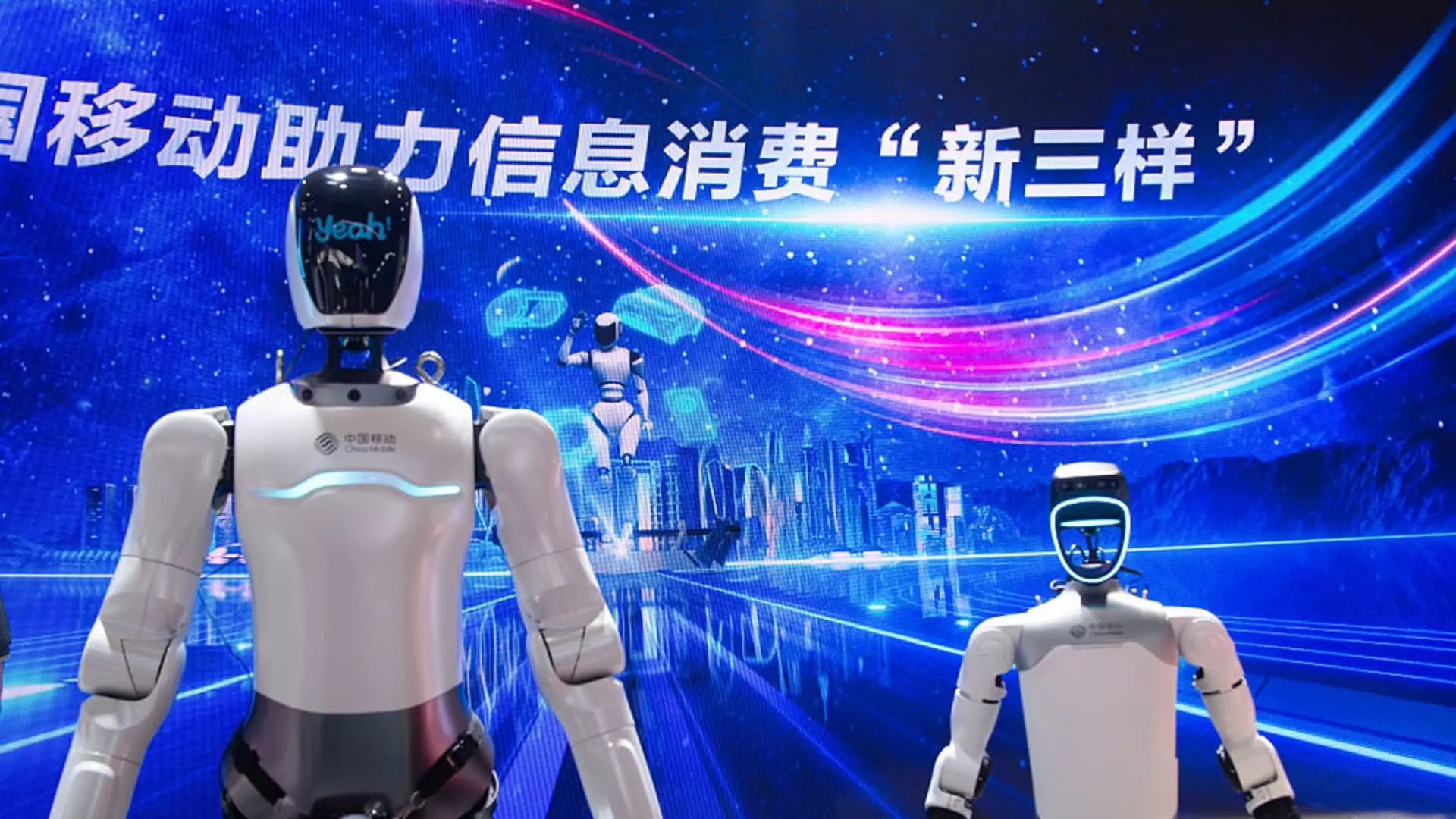As we march toward an era characterized by advanced mechanical mobility, the discourse around auto parts suppliers becomes increasingly pivotal. The auto industry stands at the brink of a transformative shift, one that transcends traditional vehicle manufacturing and dives headfirst into the realm of robotics. Analysts at Morgan Stanley have spotlighted an intriguing trend: a third wave of growth that auto parts suppliers may experience through the burgeoning market for humanoid robots. But does this optimism reflect the brutal realities of an industry that’s often overly romanticized?
The forecast is ambitious—Morgan Stanley estimates the humanoid market could soar to $800 billion in China and $5 trillion globally by 2050. However, the path to this predicted growth is riddled with complexities that shouldn’t be glossed over. While investors may be enticed by the hype, we must scrutinize both the technological feasibility and the practical implications of these forecasts.
Parts Suppliers: Riding the Humanoid Wave
The auto industry’s transition from internal combustion engines to electric cars has already laid a foundation for parts suppliers to reap benefits. Companies like Sanhua are now eyeing humanoid robots as an additional revenue stream. According to Morgan Stanley, these auto parts suppliers have an opportunity to capture up to 60% of the spending allocated to humanoid production—amounting to roughly $15,000 per unit. Yet, the question arises: how equipped are these suppliers to pivot towards producing specialized components like actuators and sensors for humanoids?
Tier-1 suppliers, such as Sanhua, appear to be positioned well at the moment; they can secure assembly orders regardless of technological pathways undertaken. This is in stark contrast to tier-2 companies, which focus on niche components like lidar sensors. While the race to dominate in humanoid technology is exhilarating, the reality is that not every auto parts supplier will successfully navigate this new terrain.
The Threat of Overextension
Many analysts operate under the assumption that the production capabilities of auto parts suppliers can seamlessly transition to humanoid robots. However, this perspective may lack nuance. The technological requirements and quality demands for humanoid robots exceed typical automotive parts production. A failure to recognize this transition’s complexities could lead to significant miscalculations in revenue forecasts and market opportunities.
Consider the case of Tuopu, which produces actuators integral to both vehicles and humanoid robots. While Morgan Stanley maintains an optimistic price target for the company, softening orders from Tesla indicate that reliance on traditional automotive clients could destabilize their projections. As competitors emerge within the humanoid sector, Tuopu’s flexibility and innovation will be tested in ways it has never encountered before. Overextending their capabilities without a robust transition strategy could result in missed opportunities and diminished shareholder value.
Geopolitical Realities and Market Dynamics
The interplay of global tensions, specifically between the United States and China, casts a looming shadow on the potential success of Chinese auto suppliers in the humanoid market. While cost advantages are often touted, these may disappear under the weight of political pressures that encourage companies to source parts from higher-cost domestic manufacturers. Sanhua’s proactive measures, such as establishing a production plant in Thailand, reflect an acute awareness of these geopolitical dynamics, yet the effectiveness of these strategies remains speculative.
Morgan Stanley emphasizes that every incremental gain in market share for humanoid actuator modules could translate into significant revenue increases—yet the underlying assumption is that market conditions will remain favorable. In industries as rapidly evolving as humanoid robotics, such assumptions could quickly unravel. For all the promise that innovation holds, the threat of regulatory shifts, supply chain disruptions, and international trade tensions can’t be overlooked.
Investment Sentiment and the Reality Check
Investors are often seduced by lofty projections and potential windfalls. The allure of a humanoid robot market promising exponential growth invites speculation and investment from even the most cautious players. However, it’s crucial to approach this opportunity with a healthy dose of skepticism. This sector is rife with opportunities for significant rewards, but only for those who can navigate the looming pitfalls effectively.
Morgan Stanley’s recommendations to invest in stocks like Xusheng and Sanhua are predicated on an optimistic scenario where the industry quickly adapts to the demands of humanoid production. Yet, one must consider that swift changes in consumer preferences or technological advancements could disrupt the very landscape these analysts envision.
In sum, the potential for auto parts suppliers in the humanoid robotics market is undeniably significant. Yet, the excitement should be tempered by a realistic assessment of the challenges ahead. The journey to humanoids may very well redefine the auto parts industry, but success will hinge not just on capturing market share, but on strategic adaptability and a nuanced understanding of the rapidly changing landscape.

